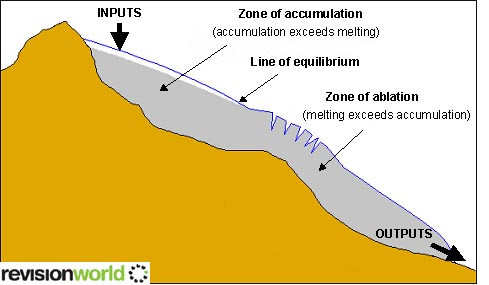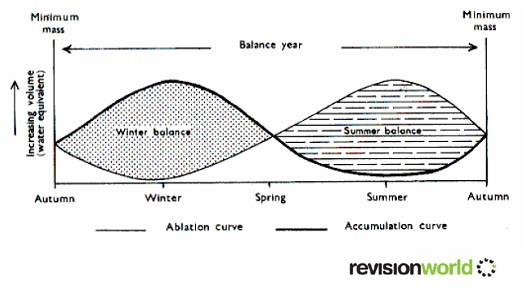Cross Profile
Cross Profile of a Glacier
Glaciers, like rivers, behave as a system with inputs, outputs, stores and transfers.
- The main input for glaciers is falling snow but avalanches can add considerable volumes of ice and snow.
- The glacier itself is the store in the form of frozen water.
- The outputs include evaporation, calving (where ice breaks off into water) and melting.
- The upper part of a glacier where inputs exceed outputs is called the zone of accumulation.
- The lower part of a glacier where outputs exceed inputs is called the zone of ablation.
- In between the two is the line of equilibrium which is the same as the snow line.

Avalanches
This video shows a model of an avalanche is created using flour and powdered potato in layers to represent the different types of snow fall during a season. The layers slip past each other when disturbed by an object, a process that is analogous to using a lubricant to reduce the friction between two surfaces.
Mass Balance
Mass balance is the annual budget of a glacier describes the input/output relationships of ice, firn and snow and is measured in water equivalent (i.e. the amount of water involved if all the ice melted).
In other words, it is the balance between accumulation, ablation and the stored ice.
The difference between accumulation and ablation for a whole glacier over a year is called the net balance (usually measured over a year between periods of minimal loss).
For most temperate glaciers the winter balance is positive and the summer balance is negative.

